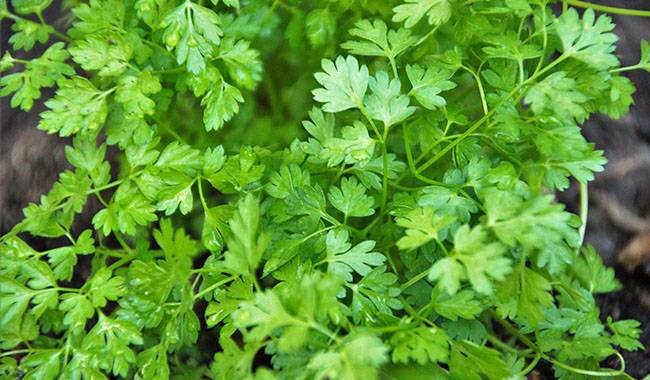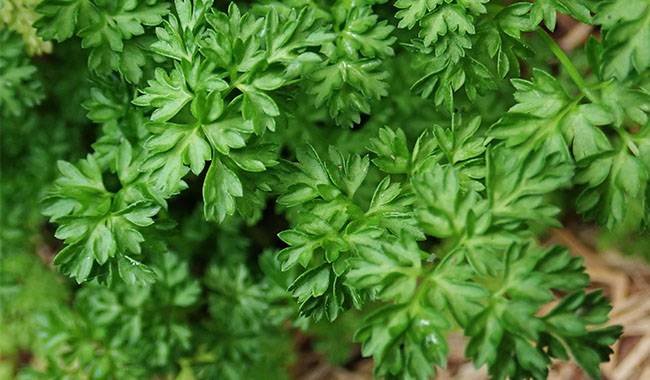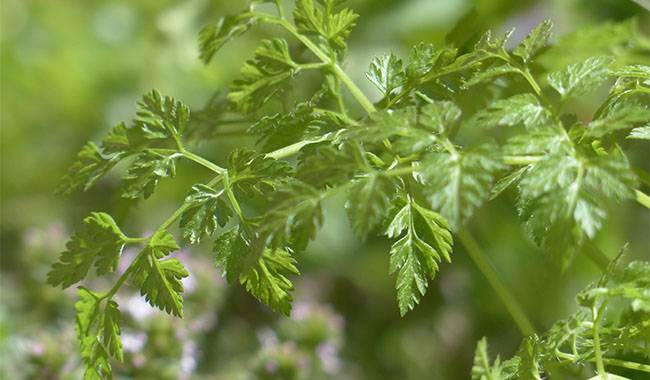
What is Chervil (spice)? You’re not likely to find Chervil in a supermarket or garden center, but it’s not for nothing that gourmets recognize it as the king of spicy herbs.
French Chervil, also known as Chervil, is found in its wild form everywhere in parts of Europe and southern Europe, and it is especially popular in the United States, France, and the Netherlands.
In Western Europe and the United States, on the contrary, it is rarely grown. And even those unfamiliar with botany should not collect wild Chervil; this plant can easily be confused with poison ivy.
But what’s so great about Chervil? Together with the fennel, it gives the first green flush of early spring. Its leaves are a cross between parsley and tarragon, and its aniseed flavor enhances the appetite.
The leaves are rich in ascorbic acid, vitamin A, B vitamins, rutin, niacin, and mineral salts.
Chervil is actively used in folk and traditional medicine. Taken with herbal tea, it normalizes blood pressure, improves blood circulation, and reduces cellulite formation. It is also used to treat hemorrhoids and varicose veins and to prevent anemia.
BENEFITS OF CHERVIL
Chervil is an excellent skin cleanser. They are even useful for septic and inflammatory skin conditions such as eczema, psoriasis, systemic lupus erythematosus, and acne (inflammation of the sebaceous glands).
Chorine preparations can improve memory and relieve depression. Tinctures and decoctions are recommended for weight loss, and a decoction of the leaves is a good eyewash to soothe and relieve stress.
Chervil can also be used to repel ants – they don’t like the smell. On the other hand, in the garden, it can act as a slug trap – they are attracted to its scent.
Most commonly, however, Chervil is used in cooking. It is a staple of classical French cuisine: cream soups, butter sauces, fried eggs, cottage cheese, cheese, butter, mayonnaise. But you need to add it at the end of cooking – its delicate flavor is unstable.
FOR FOOD
Chervil leaves on young plants that have not yet begun to flower, fresh chervil leaves are added to salads, soups, meat, and vegetable dishes.
Sometimes they are dried (but in this case they lose most of their flavor). If they are intended for future use, they are best cut up and frozen or soaked in white wine vinegar.
The roots of this crop will taste like European bluebells and white radishes. They can also be preserved through the winter for salads and cheeses.
CHERVIL’S INFORMATION
Chervil is a spicy annual plant. Both reach a height of 12-24inch (30-60 cm). The leaves are triangular-pinnate, with compound umbels at the stem ends, consisting of a few simple and short umbels.
The umbels contain 4-5 small white flowers with short pedicels. flowering from June to August, they attract many bees. chervil seeds remain germinated for 3-4 years.
Chervil cannot be harsh on growing conditions. It is hardy and shade-tolerant and can overwinter in central zone conditions under fall sowing conditions. It does not require high soil fertility, but its leaves are relatively mild and the crop is higher on light soils rich in organic matter.
In case of soil water deficiency or excessive temperatures, the green leaves become coarse and flower buds appear prematurely.
Cut out Chervil at 30-50 days and repeat sowing every 10 days. However, summer sowing in June and July should be done in the shade so that the plant does not bloom for a long time.
Due to its biology, Chervil seeds are slow to germinate and grow during the incipient period, with germination occurring after 2-3 weeks, so the area under Chervil should be cleared of weeds, especially phylloxera.
If the soil is sticky and wet, ridges need to be made under Chervil. Make 3-5 kg of well-rotted manure, 40-60 g of superphosphate, and 15-20 g of potash per 1 m2.
Sow Chervil seeds in early spring in the open field in rows 12inch (30 cm) apart at a rate of 2 g/m2 and 0.2inch (0.3 cm) deep, as light is needed for seed germination. And to get sprouts earlier and more friendly, the seeds were slightly soaked and germinated in wet sand.
Radish, garden lettuce, and mustard are sown as beacon crops. When the plants grow to 2inch (5cm) high, thinning of seedlings is done at the same time. Weeding is done manually, leaving 6-8inch (15-20 cm) between plants.
Plant care is routine – systematic watering, weeding, and loosening of row spacing. It is important to avoid getting a lot of water on the leaves to prevent fungal diseases. And to get a green quality, the formed flower stems should be removed.
However, if the seeds of some early-sown plants are left in the ground, they reproduce themselves. chervil seeds can be harvested in August. The yield of seeds – 50 g/m2.
Remove leaf rosettes 6-8 weeks after sowing. Wrap in paper towels and store them in the refrigerator for a week or more.
PROBLEMS WITH DISEASES AND PESTS
Chervil is affected by pests and diseases mainly in the seed crop, which is too dense. Vegetable leaves are eaten by small vegetable moths. Damaged plants should be removed and burned.
In the garden, snowy white Chervil flowers can be paired with mint and sage, and it is also suitable as a low cover crop around ferns or rhododendrons.
Often, this combination looks most favorable in June, when the lace flowers “brighten” dark corners of the yard or garden, and in the fall, when the pale purple-pink Chervil foliage looks unusual and attractive.





